Océanie
Australie
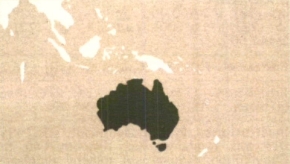
Canberra. 13 340 000. 2. 1,6 %.
Économie. PNB (72) : 3 730. Production : G(72) 108 + A(73) 129 + I(73) 118. Énerg. (*73) : 5 956. C.E. (72) : 19 %.
Transports. (*73) : 26 582 M t/km. (*73) : 4 506 100 + 1 076 900. : 1 168 000 tjb. (73) : 7 373 M pass./km.
Information. (72) : 62 quotidiens ; tirage global : 5 282 000. (72) : 2 758 000. (72) : 2 939 000. (72) : 478 400 fauteuils. (73) : 4 659 000.
Santé. (71) : 16 107. Mté inf. (73) : 16,5.
Éducation. (70). Prim. : 1 815 421. Sec. et techn. : 1 136 960. Sup. : 179 664.
Institutions. Fédération de 6 États (Commonwealth of Australie), indépendante le 1er janvier 1901. Constitution de 1901. Gouverneur général représentant la Couronne britannique : sir John Kerr. Premier ministre : Malcolm Fraser.
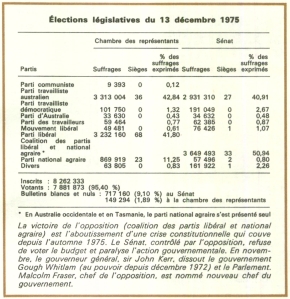
Fidji
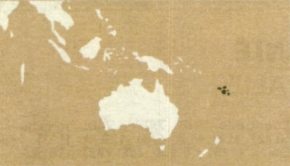
Suva. 560 000. 31. 1,9 %.
Économie. PNB (73) : 658. Production : G (72) 114. Énerg. (*73) : 508. C.E. (73) : 20 %.
Transports. (72) : 16 300 + 6 300.
Information. (72) : 1 quotidien ; tirage global : 19 000. (72) : 53 000. (73) : 23 000.
Santé. (71) : 256. Mté inf. (73) : 21,5.
Éducation. (71). Prim. : 126 130. Sec. et techn. : 20 072. Sup. : 825.
Institutions. État indépendant le 10 octobre 1970. Gouverneur général représentant la Couronne britannique : sir Robert Foster. Premier ministre : Kamisese Mara.
Nauru

7 000. 333.
Économie. Énerg. (*73) : 5 714.
Information. (70) : *4 000. (70) : 1 000 fauteuils ; fréquentation : 0,07 M.
Santé. (71) : 10. Mté inf. (68) : 51,8.
Éducation. (71). Prim. : 1 118. Sec. et techn. : 364.
Institutions. République indépendante le 31 janvier 1968. Constitution de 1968. Président de la République : Hammer de Roburt. Les Affaires étrangères et la Défense sont assurées par l'Australie.
Nouvelle-Zélande
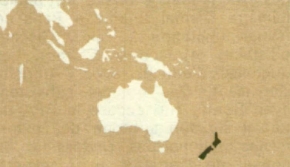
Wellington. 3 030 000. 11. 1,8 %.
Économie. PNB (73) : 4 011. Production : A(73) 120 + I(72) 110. Énerg. (*73) : 3 225. C.E. (73) : 21 %.
Transports. (*73) : 491 M pass./km, 3 065 M t/km. (*73) : 1 059 600 + 194 500. : 163 000 tjb. (73) : 1 931 M pass./km.
Information. (72) : 40 quotidiens. (73) : 2 700 000. (73) : 900 000. (72) : 144 000 fauteuils. (73) : 1 444 000.
Santé. (72) : 3 426. Mté inf. (73) : 16,2.
Éducation. (71). Prim. : 519 276. Sec. et techn. : 190 709. Sup. : 91 003.
Institutions. État indépendant en 1931. Des lois fondamentales tiennent lieu de Constitution. Gouverneur général représentant la Couronne britannique : sir Denis Blundell. Premier ministre : Robert David Muldoon.
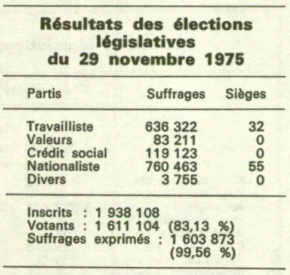
Papouasie Nouvelle-Guinée
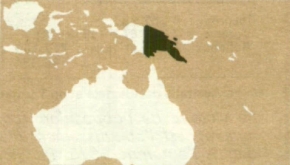
Port Moresby. 2 650 000. 6. 1 %.
Économie. PNB (73) : 556. Production : G(73) 125. Énerg. (*73) : 195. C.E. (73) : 36 %.
Transports. (*73) : 19 000 + 17 000.
Information. (72) : 18 800 fauteuils. (73) : 32 000.
Santé. (71) : 233.
Éducation. Prim. (71) : 224 654. Sec. et techn. (71) : 28 121. Sup. (70) : 1 032.
Institutions. Indépendance proclamée le 16 septembre 1975 (ancienne colonie australienne). Chef de l'État : Alexis Sarei. Premier ministre : Michael Somare. La Papouasie fait sécession le 16 mars 1975, et l'île de Bougainville, rebaptisée République de Salomon du Nord, le 1er septembre 1975.
Samoa Occidentales
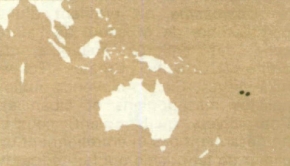
Apia. 160 000. 56. 2,1 %.
Économie. PNB (70) : 215. Énerg. (*73) : 132. C.E. (70) : 17 %.
Transports. (*73) : 1 100 + 1 400.
Information. (72) : *50 000. (72) : 80. (72) : 1 900 fauteuils ; fréquentation : 0,5 M. (72) : 2 000.
Santé. (72) : 45. Mté inf. (73) : 40,7.
Éducation. Prim. (70) : 29 405. Sec. et techn. (70) : 10 147. Sup. (71) : 129.
Institutions. État indépendant la 1er janvier 1962. Constitution de 1960. Chef de l'État : Malietoa Tanumafili. Premier ministre : Tupua Tamasese Lealofi.
Tonga
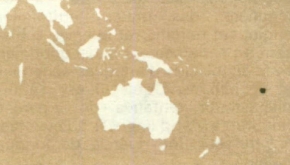
Nukualofa. 100 000. 142. 2,1 %.
Économie. PNB (70) : 167.
Transports. (*73) : 900 + 400.
Information. (73) : *9 100. (69) : 3 600 fauteuils.
Santé. (72) : 30. Mté inf. (71) : 16.
Éducation. (71). Prim. : 16 416. Sec. et techn. : 10 455.
Institutions. État indépendant le 4 juin 1970. Monarchie. Souverain : Taufa'Ahau Tupou IV. Premier ministre : prince Tu'Ipelehake.




